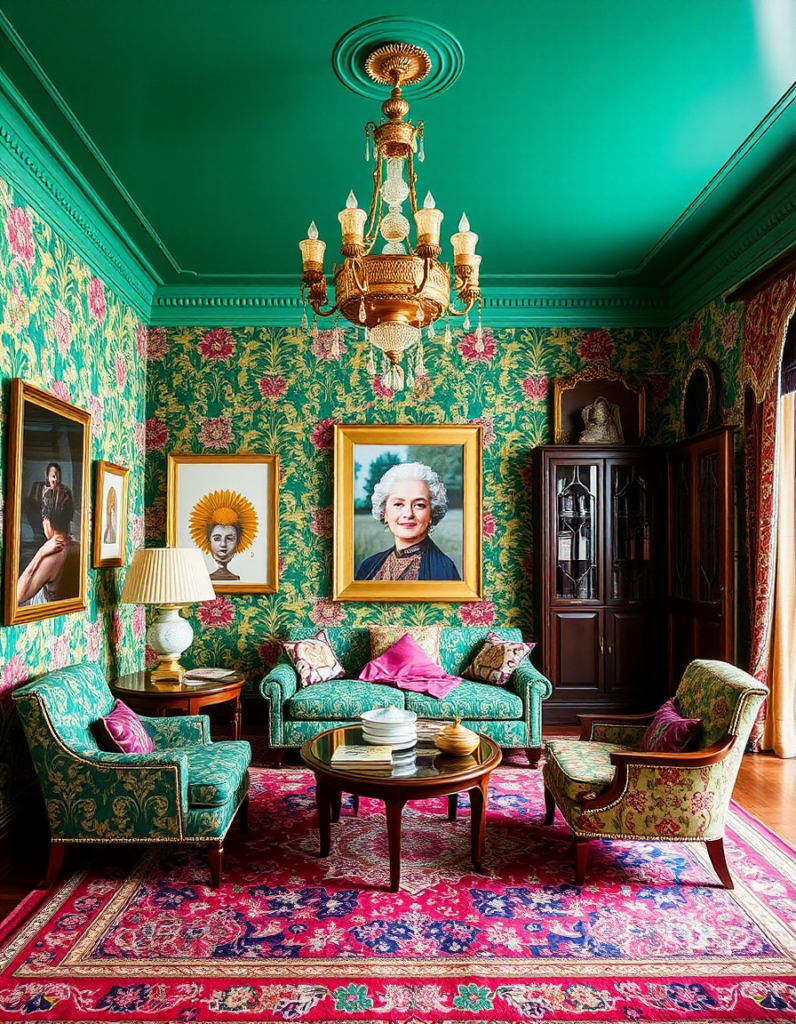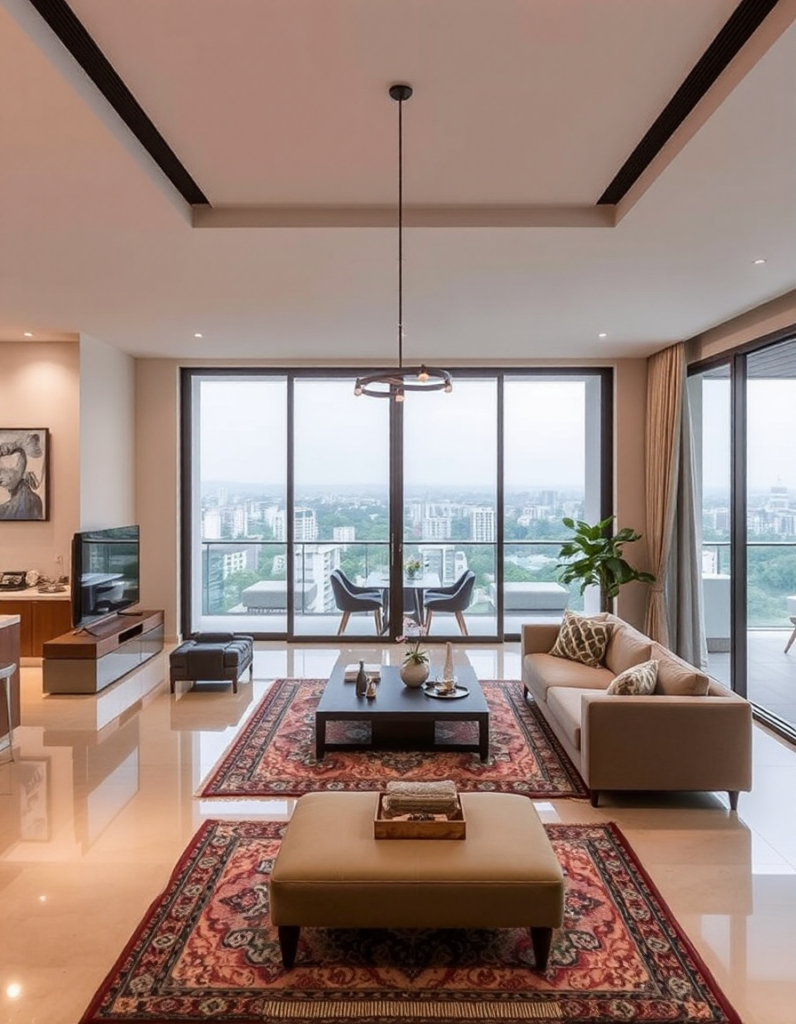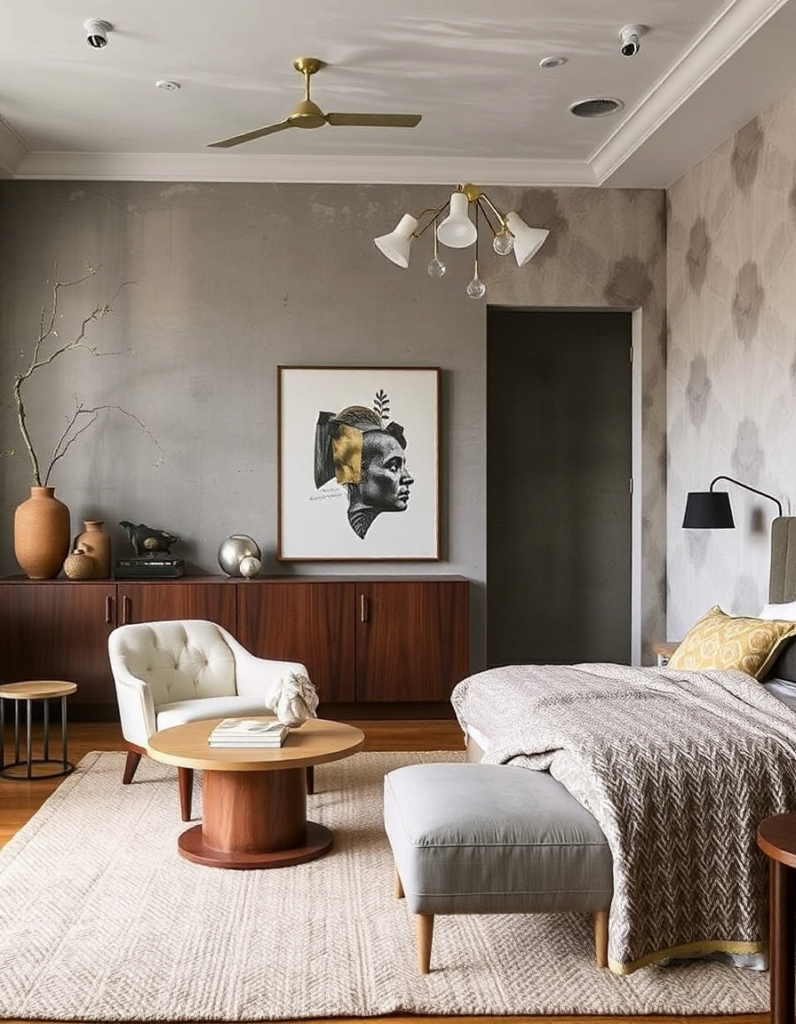🌍 Pattern #1: Japandi Minimalism
A fusion of Japanese Zen and Scandinavian functionality
🛋️ What Is It?
● Clean lines with warm textures
● Natural materials like oak, cane, linen, and stone
● Neutral palettes: beiges, warm whites, greys, soft browns
● Focus on mindfulness, decluttering, and purposeful living
🇮🇳 Why It Works in India
● Matches the climate: breathable fabrics and materials
● Aligns with Indian philosophies like Vastu, Ayurveda & Zen
● Helps manage space limitations in urban apartments
● Provides a sense of calm in today’s chaotic lifestyles
🏡 How It’s Being Used
● Low furniture with floor cushions ● Open layouts for natural light flow
● Minimal kitchens with hidden storage
● Terracotta and lime plaster walls with Scandi furniture

🎨 Pattern #2: Maximalist Expressionism from the West
Eclectic, layered, and unapologetically bold
🎭 What Is It?
● Vibrant wallpapers, art deco patterns, pop colors
● Mix of vintage, antique, and modern elements
● Pattern-on-pattern interiors
● Emphasis on storytelling and visual richness
🇮🇳 Why It Works in India
● Honors regional crafts, royal history, and local art
● Matches tastes of high-net-worth families and NRIs
● Adds personality and individuality
🏡 How It’s Being Used
● Statement wallpapers inspired by designers like Sabyasachi
● Living rooms with Murano lighting and Persian rugs
● Gallery walls with framed travel photos and brass elements
● Mixing European chairs with Indian carved wood cabinets

🌳 Pattern #3: Biophilic Design
Designing with nature – not just for it
🌿 What Is It?
● Use of natural light, ventilation, and greenery
● Indoor plants, vertical gardens, and courtyards
● Organic materials like clay, bamboo, cork, and jute
● Water features, skylights, and natural stone finishes
🇮🇳 Why It Works in India
● Supports sustainability and green certifications
● Helps reduce heat, noise, and pollution
● Resonates with traditional homes with tulsi courtyards
● Encourages mental wellness
🏡 How It’s Being Used
● Homes with plant walls and indoor creepers
● Roof gardens in urban villas
● Natural textures like Kota stone and mud walls
● Terracotta tiles and solar skylights

🏟 Pattern #4: Open Plan & Flow-Through Spaces
Inspired by American and European living
🛍️ What Is It?
● Combining living, dining, and kitchen into one large space
● Sliding glass doors instead of concrete partitions
● Air flow, light flow, and visual connection
● Zoned spaces with furniture instead of walls
🇮🇳 Why It Works in India
● Supports nuclear family lifestyles
● Encourages multifunctional homes
● Optimizes small spaces in cities
● Matches aspiration for western-style luxury living
🏡 How It’s Being Used
● Kitchen islands that double as breakfast bars
● Movable walls for flexibility
● Balcony integration with sliding glass
● Furniture-led zoning using rugs and lighting

🎮 Pattern #5: Material Blending from Italian & French Interiors
Mixing textures, finishes, and emotions
🎨 What Is It?
● Mixing matte and gloss, wood and stone, metal and fabric
● Emphasizing tactile experience
● Contrast and harmony through materials
● Textural layering over visual decor
🇮🇳 Why It Works in India
● Matches India’s rich heritage of handcrafted materials
● Adds warmth and depth in minimal spaces
● Allows budget-friendly materials to shine through pairing
● Offers a luxury feel without over-decorating
🏡 How It’s Being Used
● Polished brass with matte wood
● Kota stone floors with wool rugs
● Cane wardrobes with velvet headboards
● Concrete walls paired with mango wood sideboards

🇮🇳 What It Means for Indian Designers and Homeowners
● Global design patterns allow for personal expression and smarter homes
● Blending global trends with Indian flavor creates soulful spaces
● These patterns promote wellness, sustainability, and personalization
📱 Contact Mishul Gupta for Interior Design Consultations
● Email: contact@mishulgupta.com
● WhatsApp: +91 94675 99688
● Website: www.mishulgupta.com
Create your dream home – rooted in India, inspired by the world.
